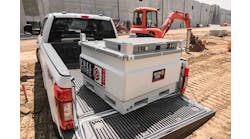U.S. Construction Starts to Increase 4 Percent in 2021, Dodge Data & Analytics Predicts
Total U.S. construction starts will increase 4 percent in 2021, following an estimated 14 percent decrease in 2020, Dodge Data & Analytics predicted in its 2021 construction outlook, released last week.
“The dollar value of starts for residential buildings will increase 5 percent in 2021, nonresidential buildings will gain 3 percent, and nonbuilding construction will improve 7 percent,” said chief economist Richard Branch. “Only the residential sector, however, will exceed its 2019 level of starts, thanks to historically low mortgage rates that boost single-family housing.”
Regarding specific segments, Dodge predicts: The dollar value of single-family housing starts will be up 7 percent in 2021 and the number of units will grow 6 percent. [Multifamily] dollar value will drop 1 percent while the number of units started falls 2 percent. The dollar value of commercial building starts will increase 5 percent in 2021. Warehouse construction will be the clear winner as e-commerce giants continue to build out their logistics infrastructure.
Office starts will also increase because of rising demand for data centers (included in the office category) as well as renovations to existing space. Retail and hotel activity will languish. In 2021, institutional construction starts will increase by a tepid 1 percent as growing state and local budget deficits impact public building construction. Education construction is expected to see further declines in 2021, while healthcare starts are predicted to rise as hospitals seek to improve inpatient bed counts. The dollar value of manufacturing plant construction will remain flat in 2021. Declining petrochemical construction and weak domestic and global activity will dampen starts, while a small handful of expected project groundbreakings will level out the year.
Public works construction starts will be flat over the year. Electric utilities/gas plants will gain 35 percent in 2021, led by expected groundbreakings for several large LNG export facilities and an increasing number of wind farms.
Construction starts (dollars) plummeted 30.5 percent year over year from October 2019 to October 2020 and 20 percent year-to-date, data firm ConstructConnect reported last week. Nonresidential building starts fell 43 percent year over year and 33 percent year-to-date (institutional, -35 percent and -16 percent, respectively; commercial, -52 percent and -34 percent; industrial [manufacturing], -32 percent and -69 percent). Engineering (civil) starts sank 40 percent year over year and 18 percent year-to-date. Residential starts fell 13.5 percent year over year and 5 percent year-to-date (apartment, -61 percent and -27 percent; single-family, 17 percent and 5.7 percent).
The Dodge Momentum Index fell 1.8 percent in October from the revised September reading, Dodge reported on November 6. The index “is a monthly measure of the first (or initial) report for nonresidential building projects in planning, which have been shown to lead construction spending for nonresidential buildings by a full year. The commercial component of the Momentum Index lost 4.4 percent over the month, but the institutional component gained 3.3 percent. The Momentum Index has struggled to make consistent gains since passing its post-pandemic low in June. Even with this month’s gain, the institutional component of the Momentum Index remains well below levels seen prior to the pandemic as state and local entities come to grips with the widening budget chasm.”
In a negative sign for office construction demand, “Corporate tenants put a record 42 million square feet of space on the market in the second and third quarters, according to data firm CoStar Group Inc.,” the Wall Street Journal reported on Wednesday. “That increased the total sublease space in the U.S. to roughly 157 million square feet, or 1.7 percent of the total office inventory. It is the highest rate since CoStar began measuring it in 2005.”
There were 229,000 job openings in construction, not seasonally adjusted, at the end of September, down 31 percent from the 333,000 openings in September 2019, BLS reported on Tuesday in its latest Job Openings and Labor Turnover Survey (JOLTS) release. September was the seventh consecutive month in which openings declined year over/eary, in most cases by more than 20 percent. Hires in September totaled 369,000, down 16 percent year over year. Layoffs and discharges plunged 55 percent year over year to 101,000, the smallest monthly total in the 20-year history of the series. Quits shrank by 16 percent year over year to 169,000.






